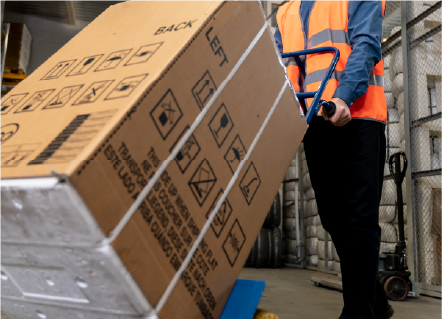Textile Industry
Machine vision technology is revolutionizing the textile industry by enhancing quality control, improving manufacturing efficiency, and ensuring consistent product quality. By utilizing advanced imaging systems and intelligent algorithms, machine vision provides critical insights that optimize various processes, from raw material inspection to final product assessment.

Key Uses of Machine Vision
Quality Inspection
Machine vision systems conduct real-time inspections of fabrics and textiles, detecting defects such as tears, stains, color inconsistencies, and weaving errors. This ensures that only high-quality materials are used in production.
Pattern Recognition
Vision systems can recognize and verify intricate patterns and designs on textiles, ensuring accuracy in production and minimizing errors in printing or weaving.
Color Matching
Machine vision technology accurately assesses color consistency across different batches of fabric, ensuring that colors meet the required specifications and match design standards.
Fabric Measurement
Accurate measurement of fabric dimensions (width, length, and weight) is crucial for production planning. Machine vision systems provide precise measurements to ensure that materials are cut and processed correctly.
Defect Classification
Advanced machine vision systems can classify defects based on type and severity, enabling manufacturers to implement targeted corrective actions and improve overall quality.
Automated Sorting
Vision systems can automate the sorting of textiles based on quality, type, or color, streamlining the workflow and enhancing operational efficiency.
Benefits of Machine Vision
Increased Efficiency
Automating inspection processes reduces manual labor and accelerates production cycles, allowing for continuous operation and higher throughput.
Cost Reduction
By identifying defects early in the production process, machine vision significantly lowers costs associated with rework and waste, enhancing profitability.
Enhanced Product Quality
With rigorous inspections and precise measurements, machine vision ensures that textile products meet stringent quality standards, improving customer satisfaction and brand reputation.
Data Collection and Analysis
Machine vision systems gather valuable data on production processes, enabling manufacturers to analyze performance, identify trends, and implement continuous improvement strategies.
Flexibility and Scalability
Machine vision technology can be easily adapted to different textile products and manufacturing processes, allowing manufacturers to respond quickly to changing market demands.
Improved Safety
By monitoring production environments for compliance and hazards, machine vision systems contribute to a safer workplace, reducing the risk of accidents and enhancing employee well-being.
